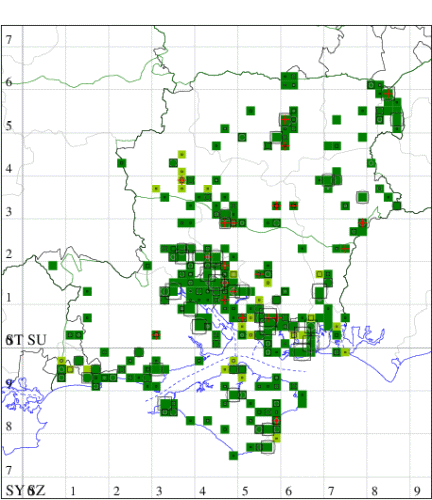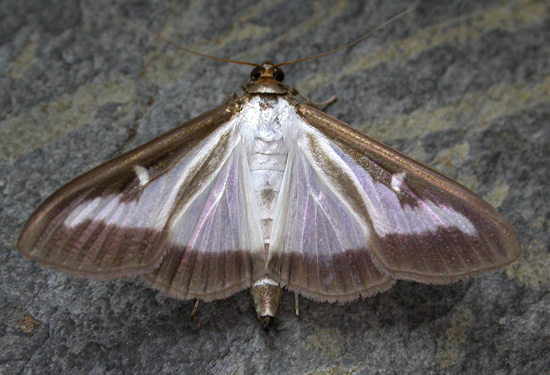Box-tree Moth
Cydalima perspectalis
Checklist Number63.054 [B&F: 1409a]
Verification
Record will be accepted (subject to date and location checks)
Classification
| Family: | Crambidae |
| Subfamily: | Spilomelinae |
| Genus: | Cydalima |
| Species: | perspectalis |
| Authority: | (Walker, 1859) |
A native to Asia, and after an initial finding in Germany in 2007, it has been found elsewhere in Europe, thought that the species was originally introduced with imports from China. Since the first finding, larvae have been found in more locations across Germany, sometimes causing severe defoliation as they feed on box (Buxus sp.). By 2008, C. perspectalis had been reported from five countries in Western Europe. In England, it was first recorded in 2008, when adult moths were caught in light traps at Icklesham, East Sussex, and Weybridge, Surrey. In 2009 a nursery in Surrey found perspectalis larvae causing severe damage.
In 2013, a large infestation was discovered at Longstock Nursery in central Hampshire, from which a number of adults were bred. In the same year, a few individuals were caught in the wild, provenance unknown, and it was new for Hampshire and the Isle of Wight in the same year.
As can be seen from the annual distribution graph, a resident population became established around 2016-2017, and numbers are increasing significantly each year. In southern Hampshire in particular it can be one of the most abundant species to light for some unfortunate recorders.
Wingspan 38-42 mm. Somewhat variable, but typical form unmistakable, and there is an attractive purple-black melanic form which is not uncommon. Larva feeds on Box, and may become a horticultural pest in the UK.
In 2013, a large infestation was discovered at Longstock Nursery in central Hampshire, from which a number of adults were bred. In the same year, a few individuals were caught in the wild, provenance unknown, and it was new for Hampshire and the Isle of Wight in the same year.
As can be seen from the annual distribution graph, a resident population became established around 2016-2017, and numbers are increasing significantly each year. In southern Hampshire in particular it can be one of the most abundant species to light for some unfortunate recorders.
Wingspan 38-42 mm. Somewhat variable, but typical form unmistakable, and there is an attractive purple-black melanic form which is not uncommon. Larva feeds on Box, and may become a horticultural pest in the UK.


The abundance in each month is indicated as follows:
 No records
No records Very occasional
Very occasional Irregular
Irregular Uncommon
Uncommon Off-peak, but not unusual
Off-peak, but not unusual Off-peak, but not unusual
Off-peak, but not unusual Main flight time
Main flight time| J | F | M | A | M | J | J | A | S | O | N | D | |
|---|---|---|---|---|---|---|---|---|---|---|---|---|
| Adult |  |  |  |  |  |  |  |  |  |  |  |  |
| Larval |  |  |  |  |  |  |  |  |  |  |  |  |

(Larval feeding damage on Buxus(20210826_084427).jpg)


